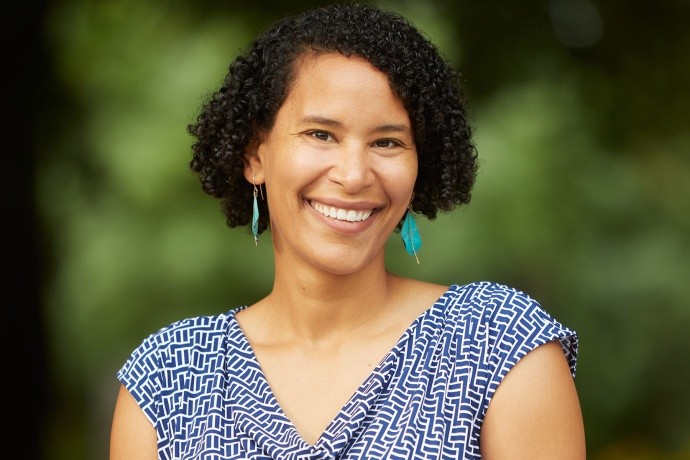Charisse Pickron ’08
- Assistant professor at the Institute of Child Development, University of Minnesota Twin Cities
- Director of the Child Brain and Perception Lab, University of Minnesota Twin Cities

Charisse Pickron didn’t intend to become an academic. But she is the first to quip that her upbringing — her mom was an early childhood educator and her dad worked in academia — may have influenced her professional trajectory. She is an assistant professor at the Institute of Child Development, University of Minnesota Twin Cities, and the director of the university’s Child Brain and Perception Lab. Pickron’s research focuses on the ways infants and small children pick up biases and prejudices, how early childhood experiences influence face perception and the ways kids start to understand and respond to social constructs like race and gender.
As a developmental psychologist who studies “baby science,” as she calls it, Pickron researches toys with the idea of showing parents what their little ones know. When adults see a new face, they may not know anything about this new person, but because of a lifetime of exposure to social constructs, like race and gender, they will subconsciously classify the person using different categories that are based on these subconscious perceptions.
Babies can’t do this when they’re born. Still, between three and nine months old, Pickron said, “there’s a dramatic shift in the brain that results in a person being really good at detecting faces that are of a race they are familiar with and not so good at detecting the faces of races of those they are less familiar with.” By nine months old, babies are just as skilled as adults are at recognizing faces.
This then begs different questions: What kinds of faces are they seeing? Are they getting used to seeing faces that might be different from their own? “What I think is underappreciated is that the people you see, the people you interact with, how you speak about someone, how you label someone, even by nine months, is laying the foundation for a bias,” Pickron said. “We have positive experiences with our caregivers, mostly, right? And that positive affect and association, plus being really good at telling my mom’s face from a different face, lead to these laying of foundations for implicit racial bias and also eventually explicit stereotypes.”
As she continues this research, Pickron is committed to building collaborative bridges between local communities. She’s interested in these questions precisely because of families and communities. “We should include community in the conversation, in the development of the questions themselves,” she said. “If there are questions that communities want to ask and I can be a part of it, then that’s great.”
Class Year: 2008
Major: Psychology and Education